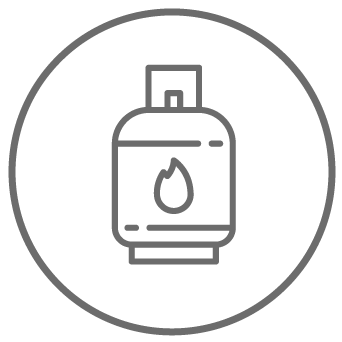Gas oil - A hydrocarbon you may not know enough about

You may not know this, but gas oil is a mixture of liquid hydrocarbons that is obtained from the distillation of crude oil and is used as a fuel for Diesel engines, heating and electricity generation. Quality depends on the characteristics of the crude oil and production techniques, although in most cases automotive gas oil complies with EN90.
Gas oil – Main characteristics
Gas oil as a hydrocarbon has some main characteristics, which we will now see together.
- 1. Cetane number: The capacity for self-ignition and affects engine cold starting, efficiency and noise. Regulations require that gas oil used as a fuel must have a cetane value above 51.
- 2. Cold filter properties: The cloud point is analyzed, which is the temperature at which gas oil becomes opaque due to the formation of kerosene crystals. The CFPP (Cold Filter Plugging Point) indicates the temperature value at which diesel clogs the filter and varies according to seasonality: 0° C in summer and -10° C in winter.
- 3. Lubricating power: This figure is influenced by the presence of sulfur, which is highly polluting and has been reduced to the maximum value of 10mg/kg in recent years. The lower lubricity due to the lower presence of sulfur is compensated by biodiesel and the use of additives.
- 4. Combustion: A reduced cetane index leads to suboptimal combustion and the formation of residues and deposits, as well as higher fuel consumption and performance. Therefore, additives are added to gas oil to increase performance and keep injectors clean and counteract biofilm formation and bacterial load.
- 5. Stability: In case of low stability, gas oil degrades quickly and there is the formation of a patina with insoluble sediment and adherent sediment. Here again, the solution is a stabilizing additive that counteracts the degradation of gas oil and decreases the need for maintenance to tanks and engines.
FAME - Definition
FAME (Fatty Acid Methyl Esters) or biodiesel refers to a mixture of esters obtained by a process of trans-esterification of fatty acids of vegetable origin with methyl alcohol. Gas oil contains within it up to a maximum of 7 percent FAME and in this way increases its ability to absorb moisture in the air and in the tank. Due to its hygroscopic power, moisture is transformed into water, which creates an ideal habitat for bacteria.
Therefore, gas oil with FAME is less durable than other types of gas oil and subject to high degradation.
Gas oil - Contaminants
One of the main issues related to the use of gas oil is the presence of contaminants, which are divided into liquid, solid, and bacterial.
The main liquid contaminant is water, which leads to rust and wear on pumps and injectors and prevents gas oil from burning. For this, the maximum content is 200 mg/kg, and above this value, gas oil becomes opalescent and you risk engine blockage.
Solid contaminants include sand and dust that wear out and hinder the proper flow of the fuel system. Again, the EB 590 standard indicates the maximum value of the solid contaminant as 24 mg/kg.
Finally, there are bacterial contaminants, which are bacteria, fungi, and molds that clog filters and occlude injectors and other fuel system components. Bacterial growth occurs at 15° C and above, which is why it is uncommon in aboveground tanks and no additives are needed to counteract it.
If you would like to learn more about diesel and other hydrocarbons, you can contact Settala Gas, a specialist in the production, marketing and distribution of hydrocarbon gases for various private and industrial uses for more than 50 years.




